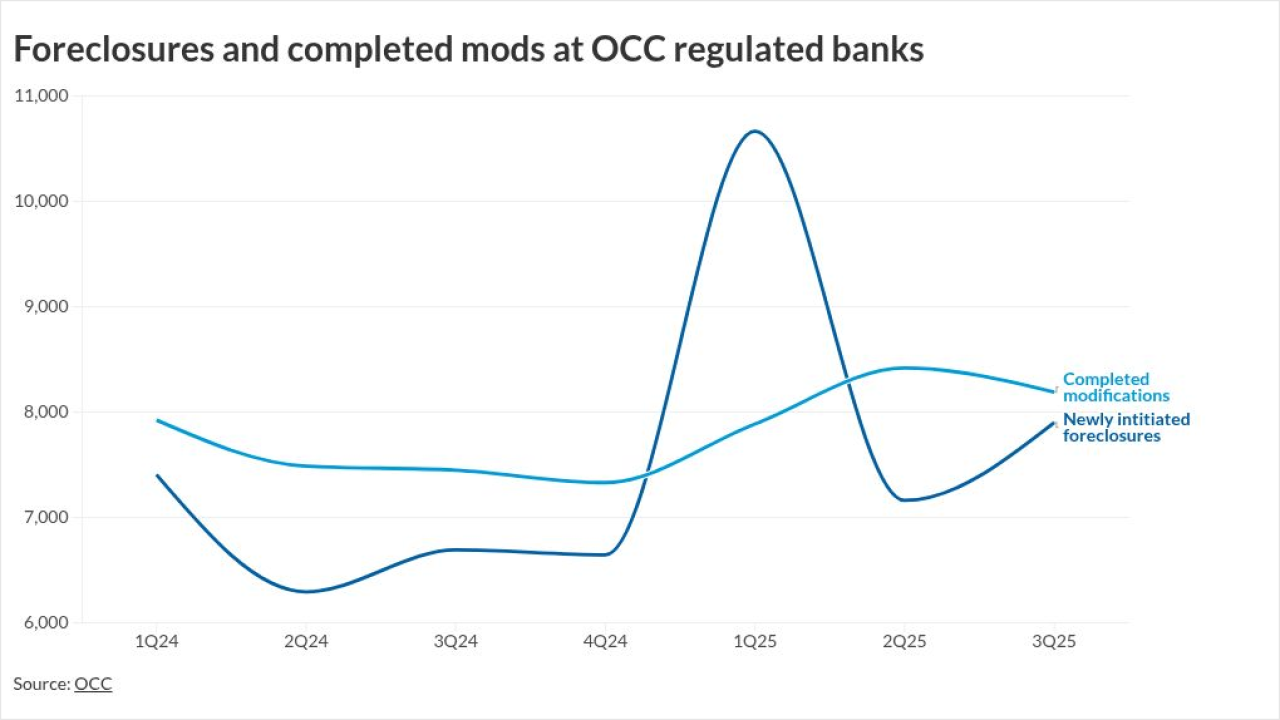Foreclosure activity dropped 18% in the first half of 2019 compared to a year ago, continuing an 11-quarter streak of sitting below prerecession levels, according to Attom Data Solutions.
A total of 152,760 properties had a foreclosure filing in the second quarter — considerably fewer than the quarterly average of 278,912 seen during the housing bubble's peak in 2006 and 2007.

Foreclosure filings, including default notices, scheduled auctions or bank repossessions, peaked after the crash, shooting to 1,654,634 in the first half of 2010. For the first six months of this year, there were a total of 296,458 properties with filings, which is 82% lower than at the start of the decade.
The findings fall in line with an earlier Auction.com report that shows mortgage servicers are getting better at loss mitigation and helping borrowers
"Our midyear 2019 foreclosure activity helps to show an overall view on how foreclosure activity is trending downward," Todd Teta, chief product officer at Attom, said in a press release. "Of course, you still have pockets across the nation where foreclosure activity is seeing some flare-ups."
For example, four of the five largest markets across the nation with the greatest annual increase in foreclosure starts were in Florida, Teta noted.
Though 62% of markets experienced declines, 36 of the 220 metropolitan statistical areas analyzed by Attom bucked the national trend with rising foreclosure activity. Some of these cities include Buffalo, N.Y., and Orlando, Fla., where foreclosure activity in the first six months of 2019 is up 33% and 32%, respectively.
States with the highest concentrations of foreclosures included New Jersey, Maryland and Delaware.
The timeline for the foreclosure process as well as the number of foreclosures shrank in the second quarter, with loans taking an average of 716 days to foreclose, compared to 835 during the same period the previous year.





